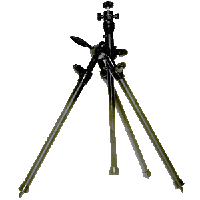
Supported by 1PLs (90-day loan)
Over the years my techniques evolved as did my ability to afford equipment. My first efforts were of larger flowers with a hand-held Minolta SLR, a 50mm lens, and a diopter filter lens. While this setup did produce closeups, the quality was not very good (though I was pleased at the time). I also wanted to be able to take magnified photographs of some of the small but quite beautiful flowers abundant in this area. It soon became apparent that filters were not the way to go and that lens extension was required. Over the years I have used extension tubes, bellows, and macro lenses for my work. I prefer the macro lenses because of their sharp optics and convenience, but great photographs can be taken with any of these options AND a good tripod.
Following is information on the equipment and techniques used to take most of the photographs.
Cameras and lenses
Most of these photographs were taken with a Nikon F2 or F3 camera using a Nikon 105mm macro lens. I also have a 55mm Nikon macro lens but prefer the 105mm because of the greater lens-to-object distance it provides. A remote cable release was used to minimize camera movement while releasing the shutter.
A few of these photographs were taken with either a Mamiya M645 medium-format camera or a Zone VI 4x5 large-format camera with a 210mm Schneider lens.
Film
The majority of the photographs on these pages were made using Kodak slide film. For a long time the only decent slide film for wildflower photography film was Kodachrome. In recent years Fujichrome Velvita has become my favorite film. The low film speed can be a problem, but the ability to match the true colors and the film's sharpness more than makes up for its low speed.
Lighting
A flash was used for about a third of these photographs. When photographing small flowers, lighting becomes critical and difficult. Slow film speed (see above), light loss due to extension (high magnification), and small f \stops for increased depth of field, can make natural light photography very difficult.
For most of my flash photographs I used a Vivitar flash off the camera with a diffuser over the flash lens. Sometimes a board covered with aluminum foil was used opposite the flash to provide fill. A flash meter was used to determine the exposure, and corrections were applied to account for the magnification. Many newer cameras can adjust flash exposure through the lens which makes a separate flash meter and corrections unnecessary.
Tripod
Wildflower photography cannot be accomplished without a good tripod. This piece of equipment is as important as the camera or lens. If you are interested in wildflower photography and have a limited budget, save money on the camera or lenses, but buy the best tripod you can find.
I was lucky to find an advertisement for a unique tripod made by Benbo. The legs of this tripod are joined at a unique U-joint that allows each leg and the center column to be independently spread out at any angle. This feature allows me to set up my camera on almost any terrain. In addition, by spreading the legs out flat, I can support my camera only inches off the ground. This tripod is still available, and is absolutely the best for wildflower photography.
